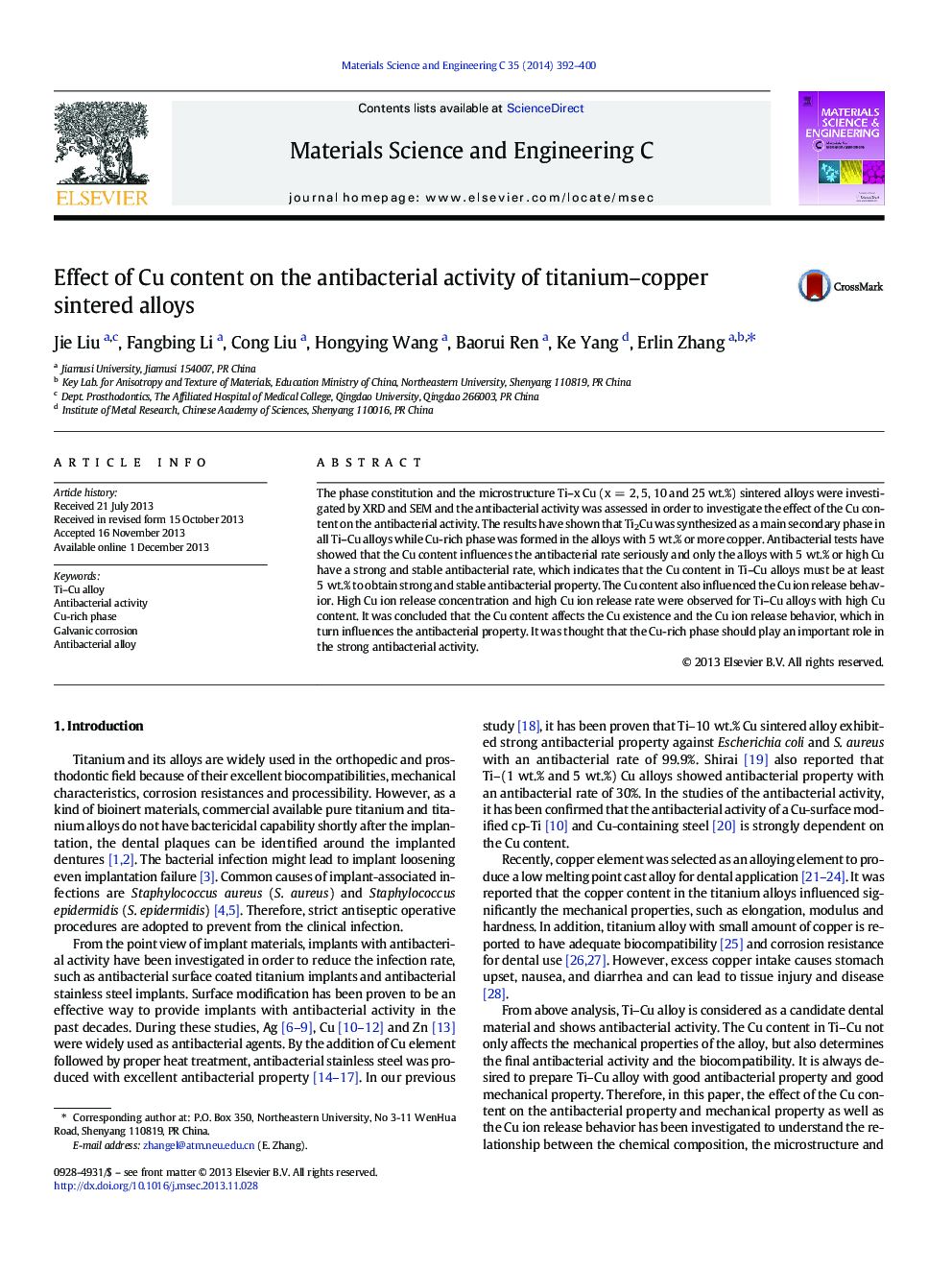| Article ID | Journal | Published Year | Pages | File Type |
|---|---|---|---|---|
| 7870493 | Materials Science and Engineering: C | 2014 | 9 Pages |
Abstract
The phase constitution and the microstructure Ti-x Cu (x = 2, 5, 10 and 25 wt.%) sintered alloys were investigated by XRD and SEM and the antibacterial activity was assessed in order to investigate the effect of the Cu content on the antibacterial activity. The results have shown that Ti2Cu was synthesized as a main secondary phase in all Ti-Cu alloys while Cu-rich phase was formed in the alloys with 5 wt.% or more copper. Antibacterial tests have showed that the Cu content influences the antibacterial rate seriously and only the alloys with 5 wt.% or high Cu have a strong and stable antibacterial rate, which indicates that the Cu content in Ti-Cu alloys must be at least 5 wt.% to obtain strong and stable antibacterial property. The Cu content also influenced the Cu ion release behavior. High Cu ion release concentration and high Cu ion release rate were observed for Ti-Cu alloys with high Cu content. It was concluded that the Cu content affects the Cu existence and the Cu ion release behavior, which in turn influences the antibacterial property. It was thought that the Cu-rich phase should play an important role in the strong antibacterial activity.
Related Topics
Physical Sciences and Engineering
Materials Science
Biomaterials
Authors
Jie Liu, Fangbing Li, Cong Liu, Hongying Wang, Baorui Ren, Ke Yang, Erlin Zhang,
